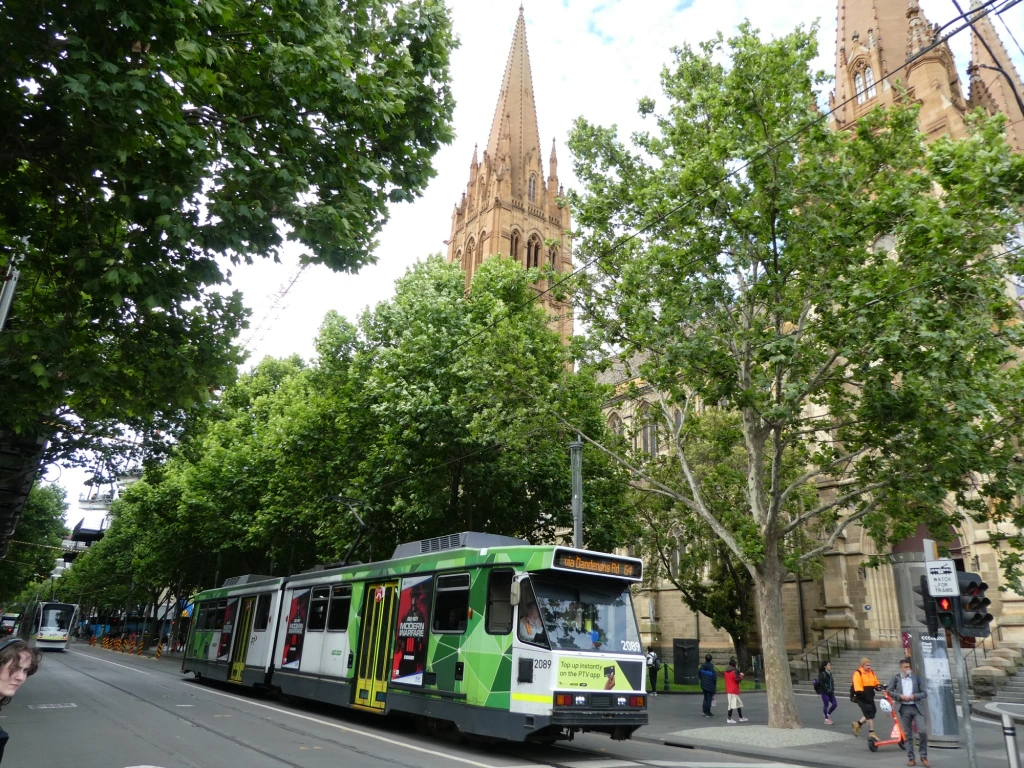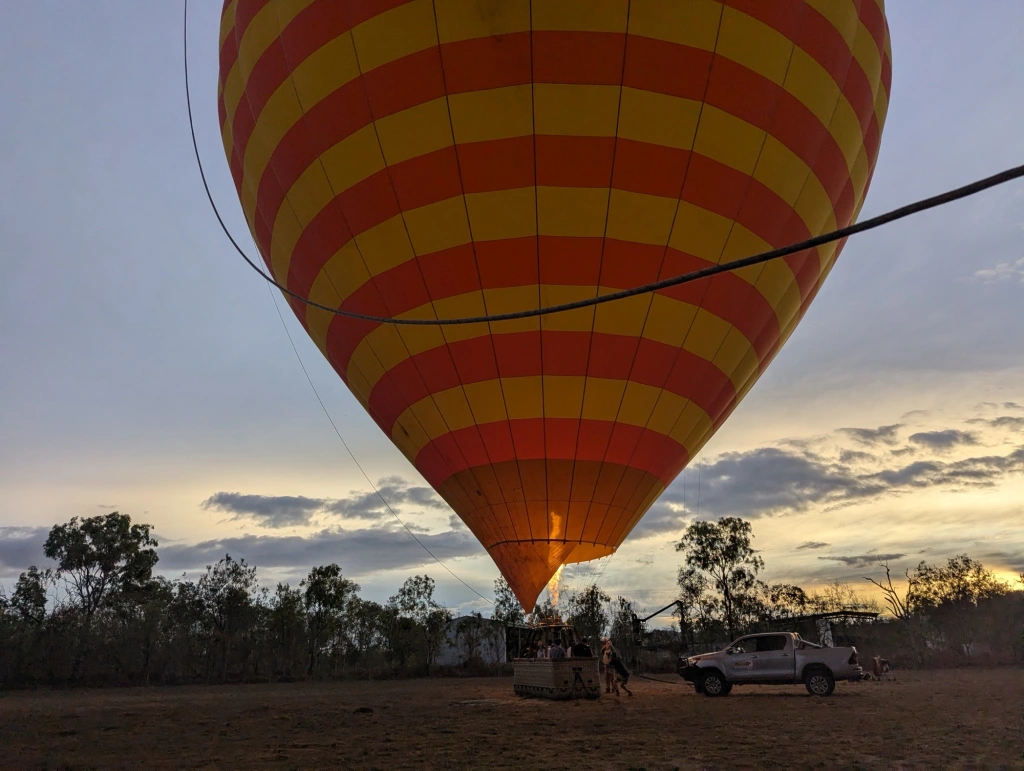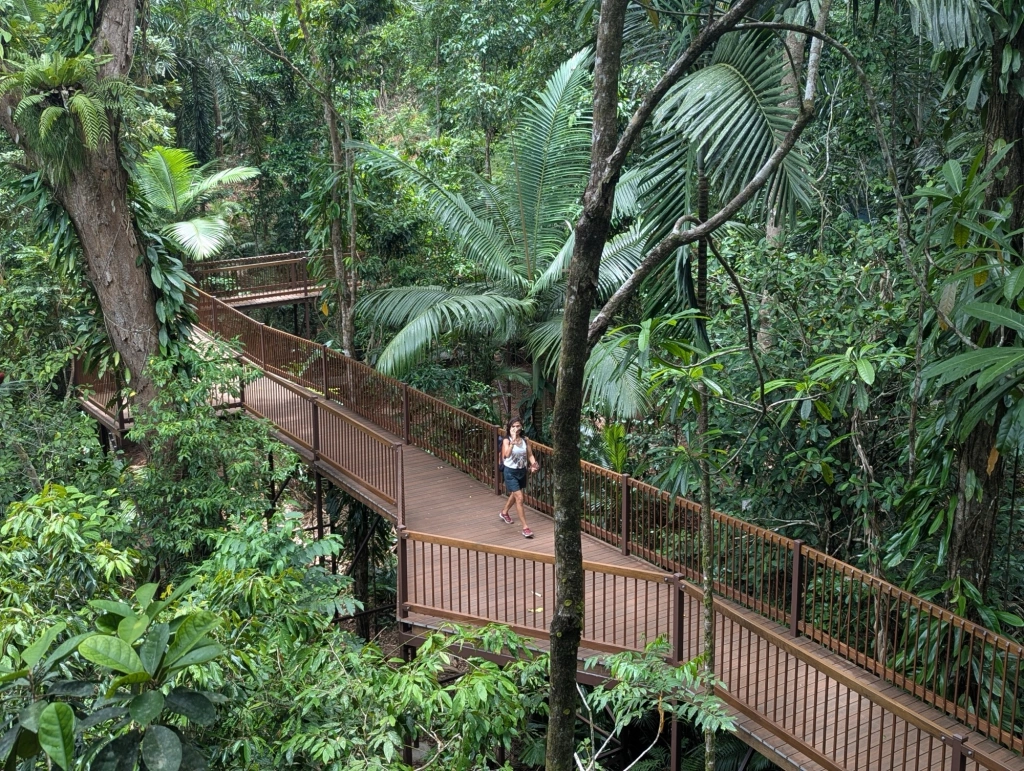G’day Australia! After taking an overnight flight with Malaysia Airlines from Kuala Lumpur we arrived into Melbourne’s Tullamarine International Airport at around 9.30 a.m.
We’d enjoyed visits to Australia several times before but these all took place in pre-blogging days and our chosen itinerary for this trip would take us to places we hadn’t previously visited.
The airport seemed to be operating efficiently and it only took a short time for us to pass through immigration and to be re-united with our luggage. Outside the arrivals hall we soon found the stop for the Skybus Express service into the city centre. Tickets are available from self service machines in the terminal and return fares cost $40AUD (£20.73) to Southern Cross Station, journey time approximately 30 minutes.
The city centre has a free tram zone which extends across the central area, enabling us to reach our accommodation without needing to purchase another ticket.
For the first four nights of our holiday we’d arranged to stay at Pegasus Suites, conveniently situated on A’Beckett St quite close to a tram stop.
After dropping off our luggage we hopped on a tram to the Old Melbourne Gaol located on Russell Street. The gaol is within the free tram zone and accessed by Trams 30 & 35 (Russell Street or RMIT University stops).
Standard admission to Old Melbourne Gaol is $35 AUD (£18.68) but please also note that as the gaol is operated by the National Trust of Australia, there is a reciprocal agreement with the National Trust in the U.K. offering overseas members free entrance providing they have a valid membership card.
After obtaining our tickets we embarked on a self guided tour of the historic prison. Some of the earliest buildings constructed on Australian shores by the British empire were prisons and Australian colonial history is one of hardship. The jail operated from 1842 to 1924 with its construction starting in 1839, only four years after the foundation of Melbourne itself. During this period the building housed dangerous criminals, petty thieves, the homeless and the mentally ill.
The first prisoners arrived in 1845 and by 1850 the gaol was already overcrowded. With the discovery of gold in Victoria, the city’s population grew and lawlessness increased in Melbourne necessitating the building to be expanded in 1852. A block for female prisoners was completed in 1864 but this is not currently open to the public. At that time, the prison occupied an entire city block, with exercise yards, a hospital, chapel, bath house and staff accommodation. There was a house for the chief warders and their families and up to 17 houses for gaolers were built on Swanston Street in 1860.
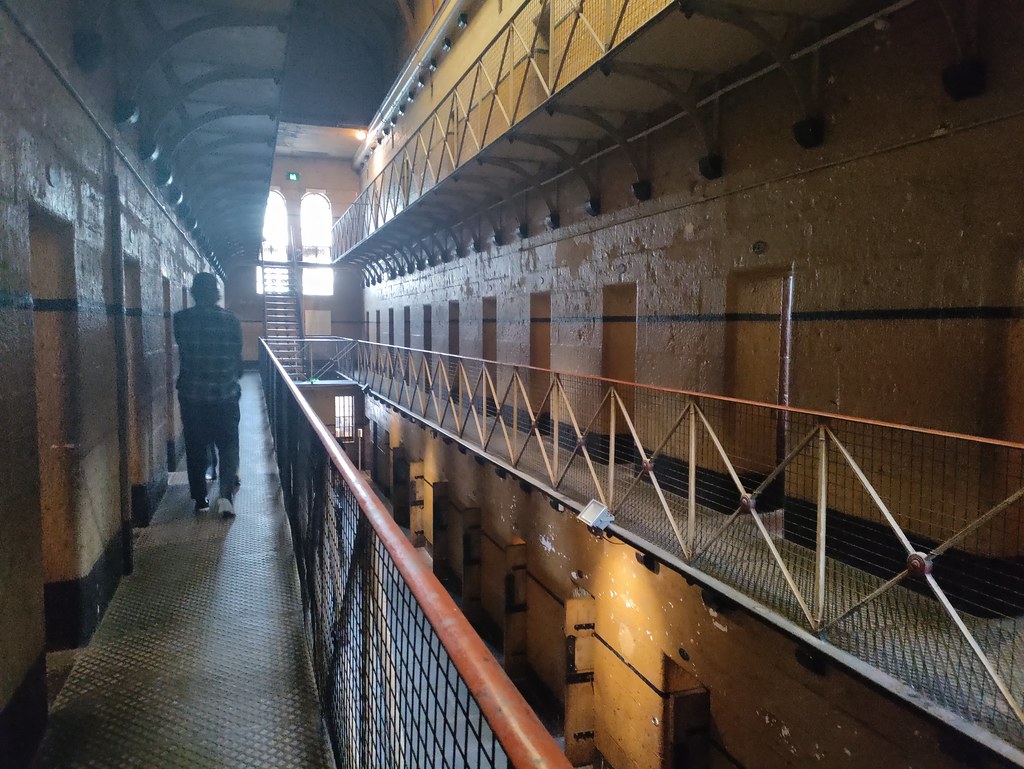
The prison witnessed the execution of many of Australia’s most influential criminals including Ned Kelly and 112 other inmates who were executed there. Our audio tour led us to the cell of Australia’s most notorious criminal, Ned Kelly. This famous bushranger was hanged at Melbourne Gaol in 1880 at the age of 25. His death mask shows a resolute yet peaceful expression, as if he had accepted his fate.
Exploring the dark corridors and cramped cells with space for little more than a bed, the gaol offered a glimpse into the harsh conditions that prisoners in the mid 1800’s had to endure. Some of the stories told within the walls are incredibly sad, including the one of Colin Campbell Ross who was wrongly convicted for the rape and murder of a 12-year old girl. Many of the cells are open for viewing with information boards and photos about their inmates and their crimes. We very much enjoyed touring the former prison spending approximately 90 minutes exploring the site.
After leaving the gaol we were then ready for some lunch but didn’t need to look far as just across the courtyard we found Pearson & Murphy’s Cafe located on the RMIT University campus, which occupies several former prison buildings. Melbourne is renowned for its coffee and our barista made cappuccinos paired with toasted sandwiches hit the spot very nicely.
Feeling re-energised we set off again, this time with a short stroll over to the Carlton Gardens which were established in 1856 on the north bank of the Yarra River and cover 26 hectares. This oasis of calm in the city centre is World Heritage listed and home to the Melbourne Museum and Royal Exhibition Building. With its extensive lawns, ornamental lakes, fountains and many specimen trees including Moreton Bay Figs, it’s a delightful place to while away a couple of hours.

The Royal Exhibition Building was built to host an international exhibition in 1880. In the decades before this event, Victoria had been experiencing a period of marked economic growth resulting from the discovery of vast goldfields in the colony. Wealth from this booming economy was being directed to grand and symbolic projects intended to reflect the status and position of Victoria, and the Australian colonies on the world stage.
Hosting the 1880 Melbourne International Exhibition was an expression of this prosperity. Other surviving venues constructed as part of the late 19th century world exhibition include the Eiffel Tower in Paris and London’s Crystal Palace.
Leaving Carlton Gardens, we continued along to Spring Street to view the exterior of another of Melbourne’s best known landmarks, that of Parliament House. This heritage building with its grand colonnade, sweeping steps and elegant lamps is the meeting place of the Victorian Government. Free tours can be arranged when Government is not sitting but these were unavailable at the time of our visit.
Moving on, we soon reached St. Patrick’s Cathedral which we accessed from the Pilgrim Path with its tranquil sounds of running water and spiritual quotes. Entrance to this impressive catholic church is free of charge.
The cathedral was constructed in stages between 1858 and 1940 and is a prime example of Gothic Revival architecture being the largest church building in Victoria. Stepping indoors we gazed in awe at its splendid high altar, nave, side chapels and beautiful floor mosaics.
Just steps away from the cathedral along Spring Street stands the Old Treasury Building, yet another of Melbourne’s finest 19th century buildings. Open Sunday-Friday 10.00-4.00 p.m. Admission free.
The Old Treasury was the main government office in Melbourne throughout the 18th century and second only to Parliament House as the centre of state affairs. It is considered to be one of the finest examples of Renaissance Revival architecture in Australia. Up until 1992 the building housed a succession of government departments including the city office of the Governor of Victoria.
Restored and opened to the public as a museum in 1994, The Old Treasury Building provided us with an introduction to Melbourne enabling us to understand and explore the city’s history, architecture, art and contemporary life.
We viewed rooms with original furnishings and inspected the original gold vaults where gold bullion was stored during the gold rush era. Also on display are rare and historic documents from Public Record Office Victoria highlighting key moments from Victoria’s history.
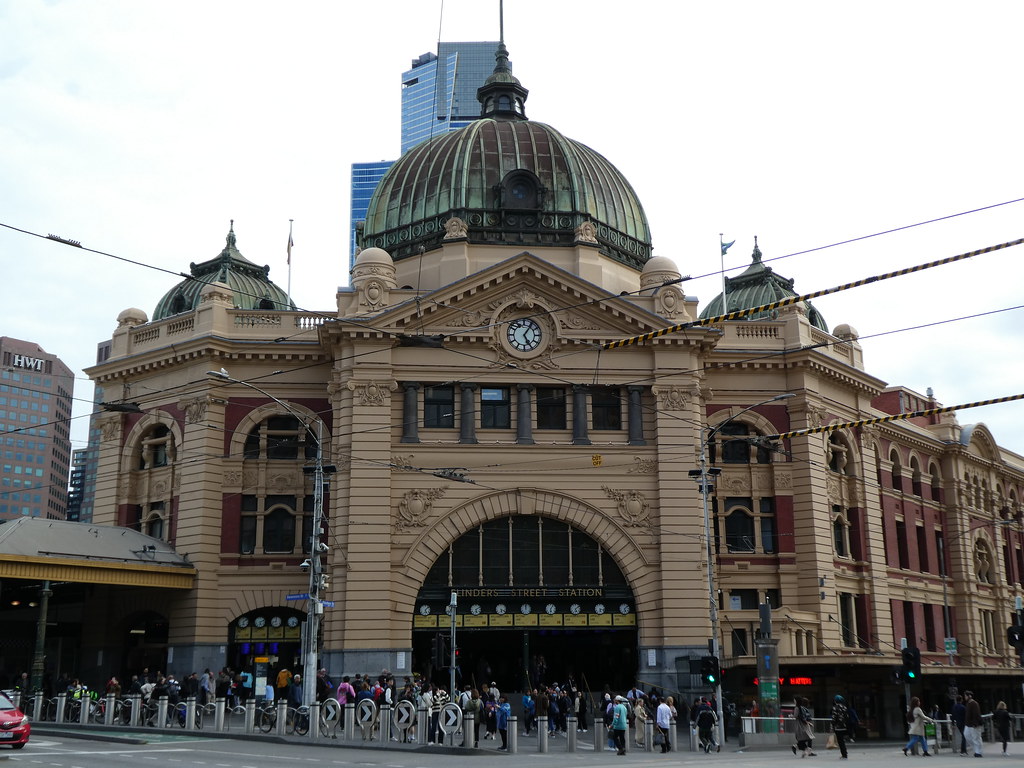
Last but not least we ended our first day in Melbourne by strolling through the lively Federation Square. Opened in 2002, it’s the city’s main public square and home to cultural attractions, restaurants, bars and cafes. We planned to return later in our stay to explore its galleries in more detail but it was good to get a first glimpse and to grab a coffee before heading back to our hotel for the night.

